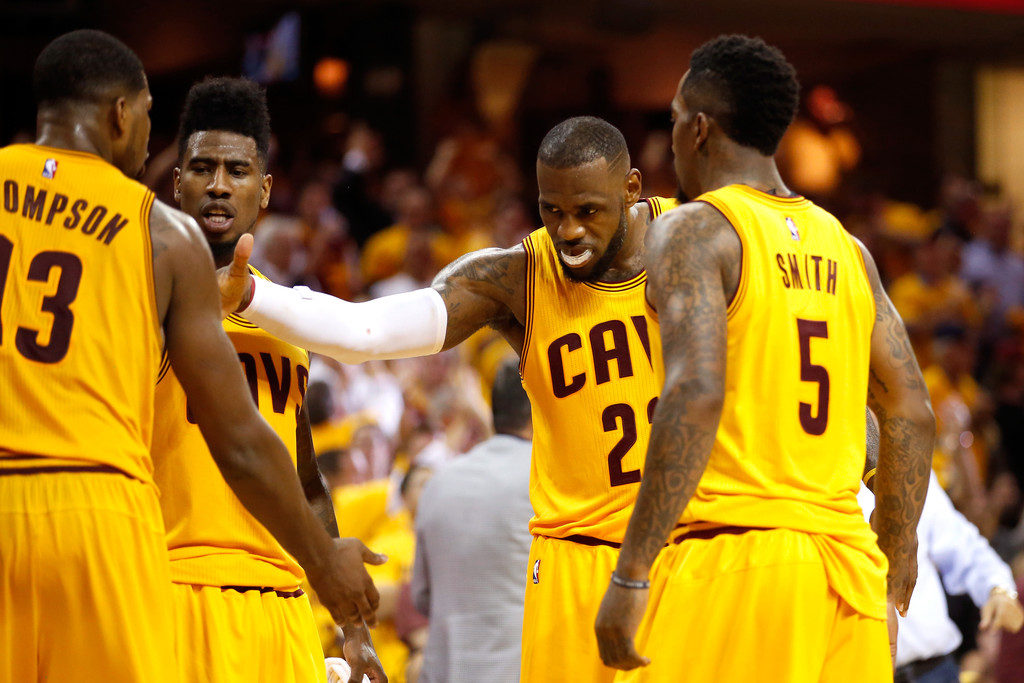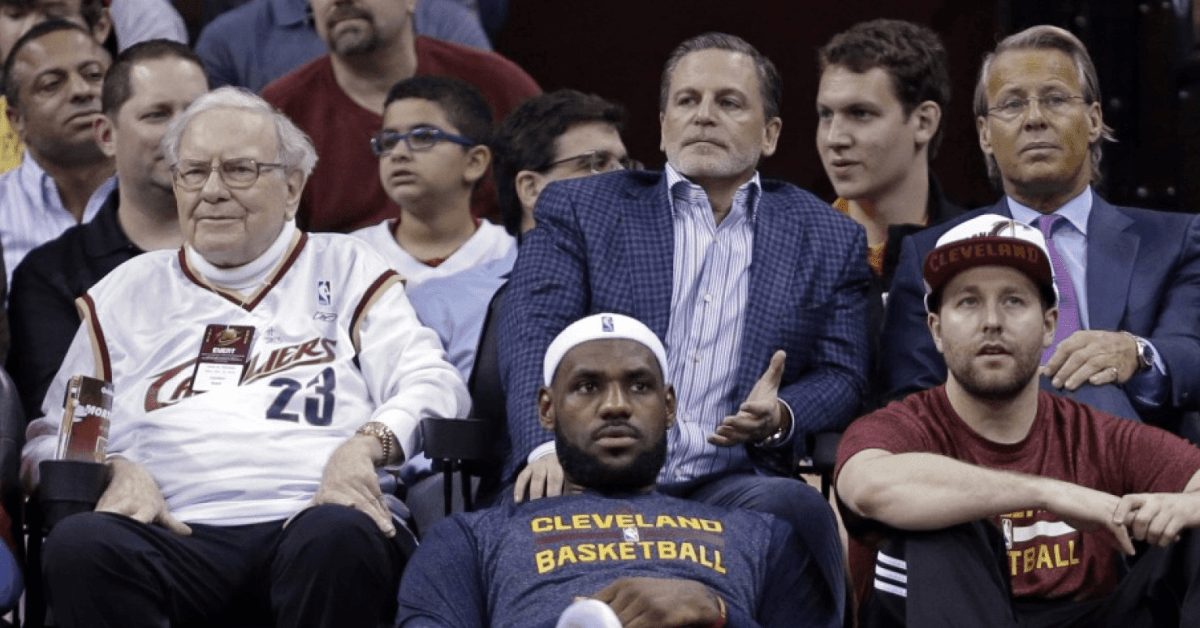Cleveland’s payroll is notoriously high and as a result, Forbes is reporting that Dan Gilbert lost $40 million on the Cavs last season. Beating out any other team in the NBA and franchise in sports, Cleveland currently spends $115 million on payroll alone.
However, the real killer for the team is the luxury tax overage of $54 million owed to the league due to exceeding the NBA’s Salary Cap. To understand why the Cavs pay so much, it’s important to understand how the NBA’s salary cap provision works.
The real dagger in Cleveland’s wallet doesn’t necessarily stem from how much they pay for players, but from the fact that Cleveland has payed salary above the tax threshold for several years. The NBA’s tax policy works as such. A soft cap exists, set this year at $94.14 million dollars in total salary, meaning teams can sign any free agent for as much money as long they are below the tax line.
For example, if Team A wants to sign Free Agent X, and they currently have a salary of $90 million total, they can offer that player $4.14 Million dollars a year at the most. However, this is a soft cap, meaning there are exceptions to this rule. The three that are important to Cleveland’s tax situation are the “Taxpayer Midlevel Exception”, “Veteran Minimum Exception” and most importantly “The Larry Bird Rule.”
Cleveland has built a majority of their support cast using Taxpayer Midlevel Exceptions and Veteran Minimums. Veteran minimum salaries allow a team to exceed the salary cap with no penalty as long as they are offering a league minimum salary and do not offer any sort of incentives additionally. Richard Jefferson, James Jones, and Chris Andersen are all examples of this.
The Taxpayer Midlevel exception is awarded once a year to teams above the salary cap. Cleveland being over the tax limit (holding more than $113 million in team salary) is awarded $3.36 Million to sign a player despite not being able to sign a player due to their excess salary. Cleveland spent this on Mo Williams last year, and did not use it this year. These two exceptions, however, are not the source of Cleveland’s notorious payroll and tax situation.
For that, we turn to the Larry Bird Rule.
While there are nearly infinite exceptions to this rule, the Bird Rule (named after Larry Bird as he was the first player to ever have his salary extended in this way) in layman terms states that teams can resign their own players to whatever salary they see fit (obviously it cannot exceed the maximum salary, which is a whole thing in and of itself). This is where Cleveland, and Dan Gilbert specifically, is forced to pay. Signing players such as LeBron James to a three year, $100 million contract (adding 30 million to the yearly payroll alone), Kevin Love to a five year, $110 million contract, and Tristan Thompson to a four year, $82 million contract pushes the salary up to nearly the limit with those three players alone. Adding Kyrie Irving, Channing Frye, and J.R. Smith to the mix clears not only the soft cap, but an additional cap set at 113.9 million dollars where teams start getting fined.

Gregory Shamus/Getty Images
Known as the “Luxury Tax,” this second threshold prevents teams from abusing the soft cap by heavily penalizing going above it. For every dollar that a team is over this cap, they need to pay an additional fixed amount to the league. For most teams doing this, one year to win a championship might be worth it, but due to a clause called the Repeater Tax (proposed by Dan Gilbert himself, ironically enough) the longer a team holds these salaries, the more expensive it gets. Currently, due to being over the Salary Cap for the third year, Cleveland pays an additional $3.51 to the league for every dollar over the $113.9 million limit. With Cleveland fronting a $128 million salary this year, this totals to an extra $54 million dollar check going straight to the league.
Dan Gilbert, however, has his reasoning for the excess of spending on these Cavaliers. Gilbert isn’t the only owner who works at an operating loss (losing money yearly), Mikhail Prokhorov of the Brooklyn Nets, Paul Brown of the Portland Trailblazers, and the Dolan Family’s Knicks all lose more money than they make. Of those four, Gilbert is the only one with a ring to his name.
The intangibles of winning alone can be used as a justification for spending, however there are some financial reasons Gilbert may additionally be looking to continue spending. Gilbert owns not only the Cavs, but much of the area around the arena. While 40 million in operating losses might seem bad in a bubble, the owner of a casino attached to the arena and the train station/shopping mall attached to the arena may instead call that a barrier to entry for attracting a large population to his establishments several times a week. As a result, the Cavs are seen not as an individual entity, but a major part of his overall plan.
Additionally, Gilbert also sees the Cavs as an investment. If there is any validity to the rumors that Gilbert is looking to sell the Cavs, it makes sense for him to operate at a loss, if he can recoup that and more by a spike in valuation. Forbes reports that due to the new TV deal, as well as increased popularity, that all teams are rising in valuation.
However, Cleveland is outpacing the entire league, jumping 18% in the past year alone, and almost 50% since LeBron James’ return in 2014. This shot Cleveland from the 19th most valuable franchise, to the 12th, with the expectation that in this year’s annual valuation list, Cleveland will be top 10. Gilbert bought the franchise in 2005 for just over $375 million dollars, with Forbes estimating that currently the franchise is worth $1.1 Billion at the end of the 2015-2016 season. It would make sense to take a $40 million dollar loss if in exchange the sale price of the Cavs jumps to somewhere between $1.3 and $1.5 billion. However, these are simply hypotheticals.
Maybe none of this is true. Maybe the $40 million in losses isn’t part of the plan, and it does sting Dan Gilbert’s pocket. Maybe he cringes every time he signs a check to find Tyronn Lue’s $35 million salary, or James’ monstrous pay. But that $40 million is buying Dan Gilbert and the entire city of Cleveland something that normally isn’t for sale. $40 million is the cost of a winner and a legacy.
*A special Thank You to Larry Coon for explaining the CBA in its entirety. Any references to the CBA or salary cap were sourced from his in depth website. You can find his work here.
